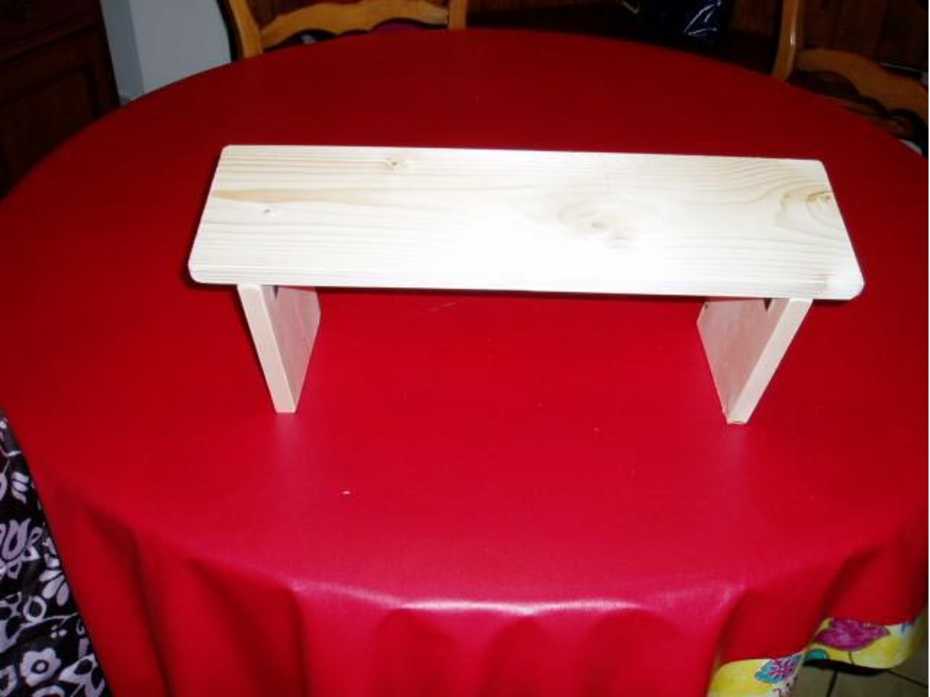
Make a DIY Meditation Bench Stool
Design for Folding Leg Meditation Stool or Bench Seat
This stool can be relatively easily and inexpensively made by anyone with a saw and a screwdriver from new or recycled materials. This style of bench is ideal for carrying to meetings, sitting out in the countryside or putting in your bag for taking on retreat.
A kneeling bench (also known as a seiza bench) is often a suitable alternative for those who find cross-legged sitting difficult but do not want to sit on a chair. It is suitable for all styles of meditation in a kneeling posture from Japanese Zen zazen or shikantaza to Tibetan, Theravada, and non-Buddhist meditation or mindfulness practices.
The bench is sized to be used with a cushion or upholstered. Suitable cushions are available from Primark, for example, for about £3 [Oct 2006].
Read on for photos, parts list, instructions, plans.
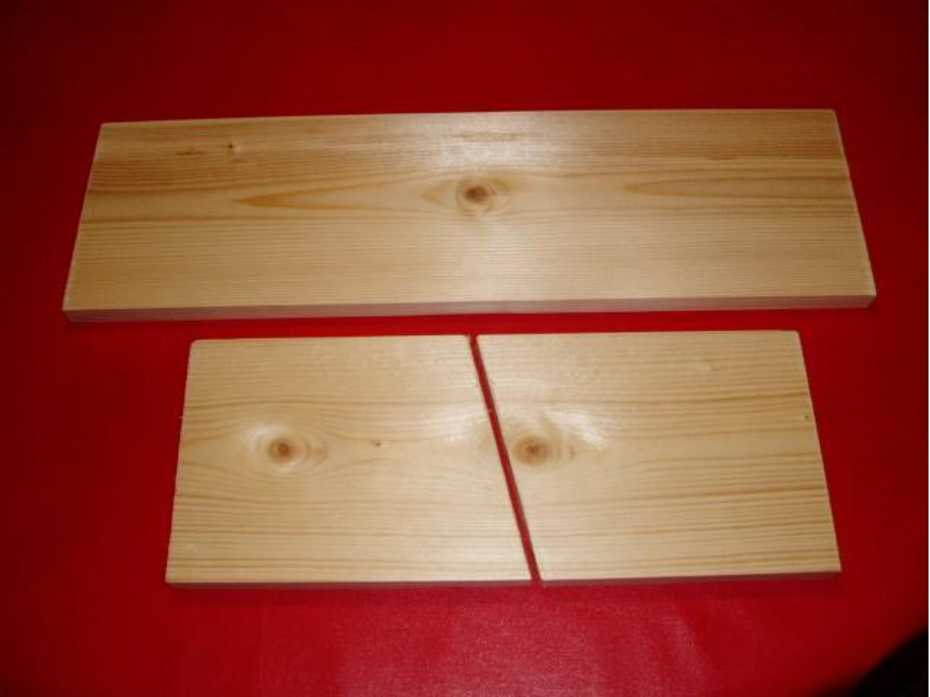
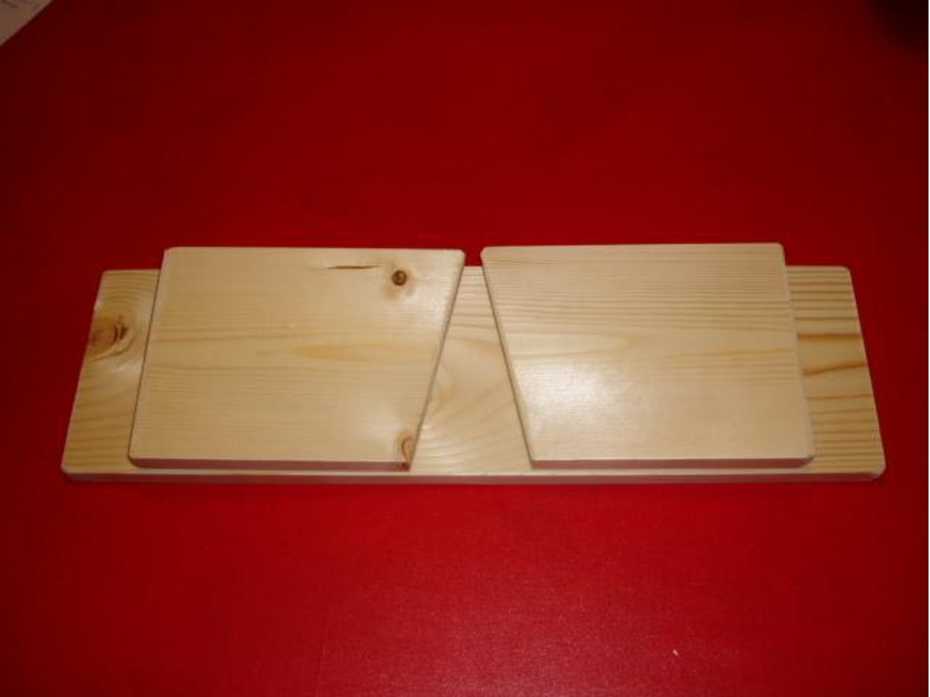
Materials and Dimensions List
- Plank or sheet material: 860mm long x 144m wide x 18mm thick [34" long x 6" wide X ¾" thick, planed]. This is a standard thickness and width available from most DIY stores. Alternatively, off-cuts of sheet materials such as blockboard or plywood can be used, but not chipboard or MDF.
- Hinges: 2 off 100mm or 75mm [4" or 3"] butt hinges, preferably brass or zinc plated if the bench is not going to be varnished or painted.
- Screws: 12 or 16 off [to suit hinges] ¾" x 8's [20mm long x 4mm dia]
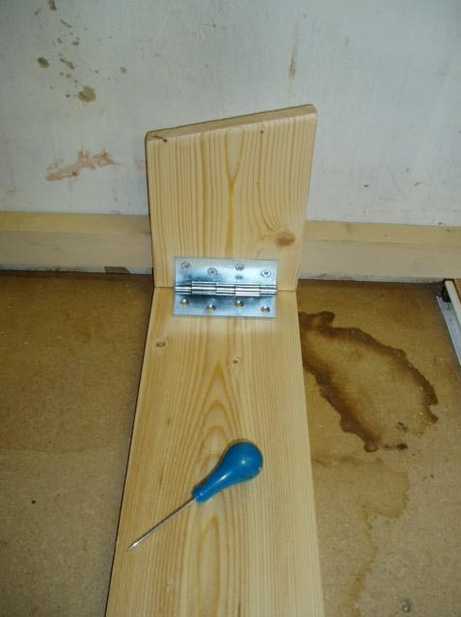
Making the Bench
Measure 500mm [20"] and cut off the bench top. A smaller top can be used, but a minimum of 400mm [16"] should be maintained between the legs of the stool when in the raised position.
On the front edge of the remaining 360mm [14"] piece of wood, measure 195mm [7.7"] from the left hand side. On the far edge, measure 195mm [7.7"] from the right hand side. Draw a line between these 2 points and cut the angled foot of the stool as shown. N.B. These measurements only work for 144mm [6"] wide wood. If the wood is bigger or smaller than this by more than 25mm [1"], then draw a line that passes through the centre point of the wood at 78º.
Remove any splinters from the cut edges and round all the sharp edges and any other roughness by sanding.
Push the square end of the leg tightly against an upright surface with the long edge to the right. Place the hinge centrally on the leg and hard up against the same surface. Screw the hinge to leg.
Repeat for the other leg, this time with the long edge to the left.
Either:
- Measure 30mm [1.25"] from each end of the underside of the bench top and draw 2 lines square across the width, or
- Find a piece of scrap wood 30mm wide and use this as a spacer to set the position of the stool legs from the end of the bench top when this is pressed up against the same surface.
Align the width of the legs with the width of the bench top and screw them in place.
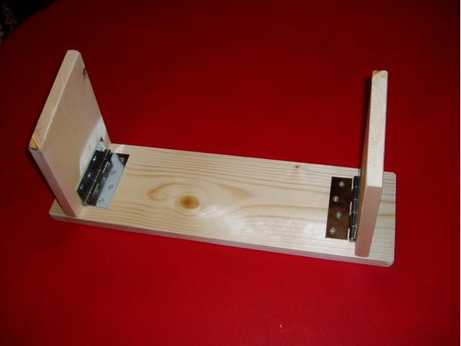
The stool is now ready for use.
If longer legs are required, then they need to be sited further out towards the edge, if they are to lie fully flat when folded. The "ears" on the bench aren't strictly required, but make it easier to position the bench under the buttocks when in use. The legs obviously need to butt up against the bench top to lock in the open position when in use.
Mass Manufacturing
With the help of a power saw, power sander and power screwdriver, plus various jigs to save me measuring anything more than once, I made 14 benches for use and sale by the Swindon Chan Group in about 3 hours and for a materials cost of about £32 [Oct 2006].
- Timber: Pack of 5 2.4m x 144mm x 18mm PSE from Wickes [107-022] £16, plus 500mm off-cut of the same to complete set of parts.
- Hinges: 14 pairs, 100mm zinc-plated, Screwfix 13578, £15
- Screws: 400 ¾" x 8's [needed 224], Screwfix 13228, £1.20
Cutting List:
- Plank 1: 4 x 500mm and 1 x 360mm
- Plank 2: 4 x 500mm and 1 x 360mm
- Plank 3: 4 x 500mm and 1 x 360mm
- Plank 4: 6 x 360mm
- Plank 5: 1 x 500mm and 5 x 360mm
- Offcut: 500mm
©Peter Howard and Swindon Chan Group 2006. May not be quoted for commercial purposes. Anyone wishing to quote for non-commercial purposes may seek permission from the WCF Secretary.
The articles on this website have been submitted by various authors. The views expressed do not necessarily represent the views of the Western Chan Fellowship.
Permalink: https://w-c-f.org/Q350
